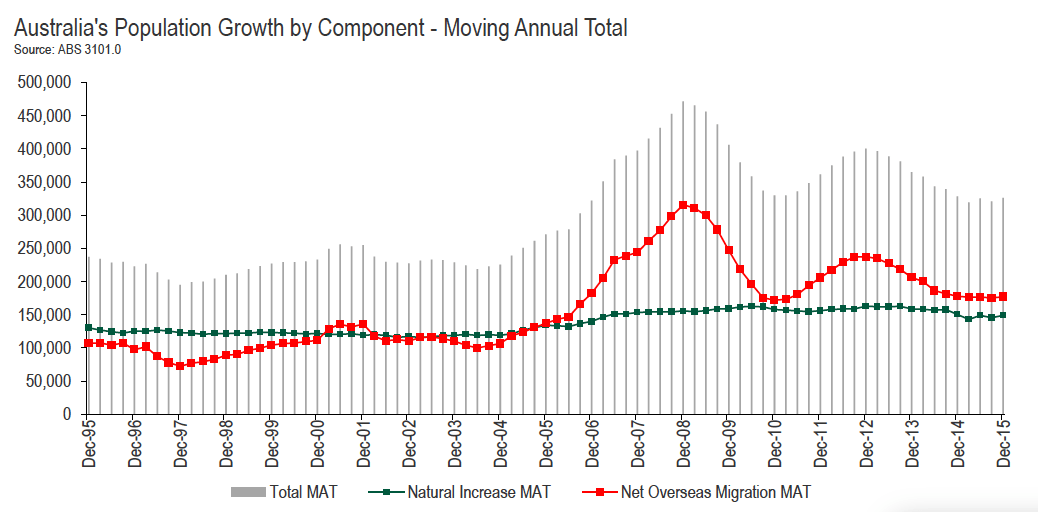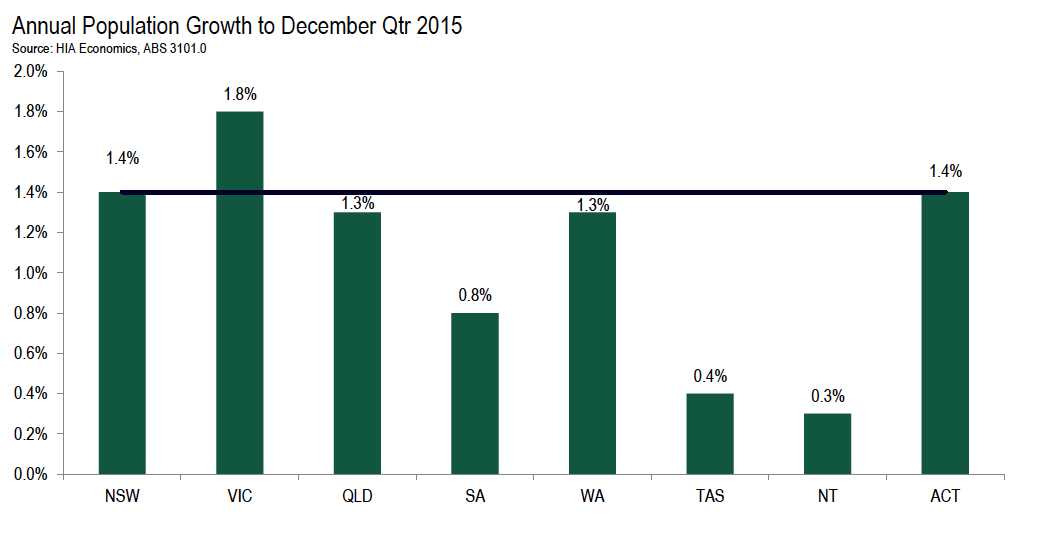Population growth strongest in Victoria
The latest demographic statistics released by the Australian Bureau of Statistics (ABS) show the pace of population growth steadied in the latter half of 2015, though there are quite wide divergences between the states and territories, according to the Housing Industry Association (HIA).
The ABS figures show Australia’s population reached 23.94 million at the end of December 2015, an increase of around 326,000 people over the full calendar year amounting to 1.4 per cent annual growth.
Net overseas migration (incoming minus outgoing migrants) resulted in an additional 177,138 people during 2015, but the net inflow was 0.5 per cent smaller compared with a year earlier.
Natural population growth (births minus deaths) added 148,935 people to the population in 2015, which is almost exactly the same as the previous year.
“Variation in economic performance across geographic areas has a significant impact on the flow of migration, and vice versa,” HIA economist Geordan Murray says.
“The states posting better economic performance have people flocking to them, while the underperforming states and the mining states face challenges.
“The states along the eastern seaboard were the star economic performers in 2015, and the demographic statistics reaffirms this.
“Victoria posted the strongest population growth of 1.9 per cent over the year, while New South Wales was second fastest with growth of 1.4 per cent.
“Queensland posted the third strongest rate of population growth of 1.3 per cent.”
Murray explains that while this is relatively slow for the sunshine state (in a historic context), when you consider the state is also feeling the effects of the downturn in investment from the resource sector it’s still a positive result.
“The strength of Queensland’s performance is particularly evident if you draw comparisons with the other mining states,” he adds.
“The rate of population growth in Western Australia has dropped to 1.2 per cent, with fewer overseas migrants arriving and a larger net outflow due to interstate migration.
“The Northern Territory fared even worse – the NT’s population actually shrank in the final quarter of 2015 and the annual rate of population growth fell to 0.3 per cent, which is the slowest in the country.
“Housing markets around the country are responding to these demographic dynamics,” Murray explains.
“Victoria and NSW have seen the strongest rates of population growth and the population influx increased demand for housing.
“The residential building sector in these two states is responding accordingly – Victoria and NSW are currently the two strongest markets for residential building.
“There’s no coincidence that NSW and Victoria are also the strongest two state economies.”
The flow of inward migration to Australia has slowed markedly over the last few years and given the impending problems that are expected to arise in Australia as baby boomers exit the workforce, workforce numbers will need to be replenished, according to Murray.
“A strong migration flow is the key to this. Policy makers must ensure that Australia remains an attractive place for skilled migrants to settle,” he concludes.


![]()
Article source: http://feedproxy.google.com/~r/API_Property_News/~3/N5kkd-_b-x4/